Notable trees
Frangipani (Plumeria)
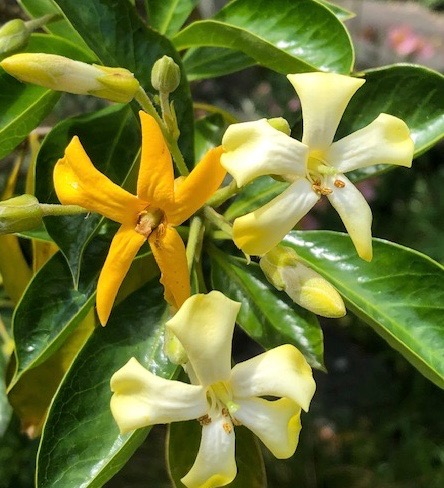
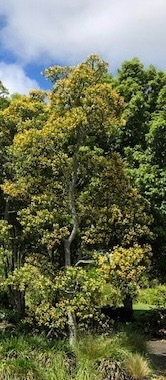
The many varieties of Frangipani, from shrubs to small trees, are endemic to the Americas between Florida and Brazil. Their flowers are most fragrant at night in order to attract the sphinx moth to pollinate them: they have no nectar so as the moth searches fruitlessly for nectar it also pollinates the flowers. In the absence of the sphinx moth, propagation is easy by cutting, and despite their subtropical origins they will grow in suitable spots in New Zealand, as seen here in a Tamahere garden.
The genus Plumeria is named in honour of a 17th century French botanist and monk , Charles Plumier, who travelled to the New World documenting plants and animals. The name “frangipani” comes from a 16th century Italian noble who claimed to have invented the plumeria-scented perfume.
In Mesoamerica, frangipani has held complex symbolic significance for two millenia: among the Mayan people it has been associated with fertility, and among the Aztecs with nobility. In SE Asia it is considered a sacred flower, often used for temple offerings in Hindu, Jain and Buddhist cultures. This raises the interesting question of how and when frangipani came to SE Asia: for instance in Java there is a plumeria relief at Borobudur, which was constructed in the 9th century, centuries before European exploration. In local Asian folklore frangipani is associated with ghosts and demons and death. And finally in the Pacific the flowers are used for making leis, and in modern Pacific culture, may be worn by women to indicate relationship status.
Maples from Around the World 1
Manitoba Maple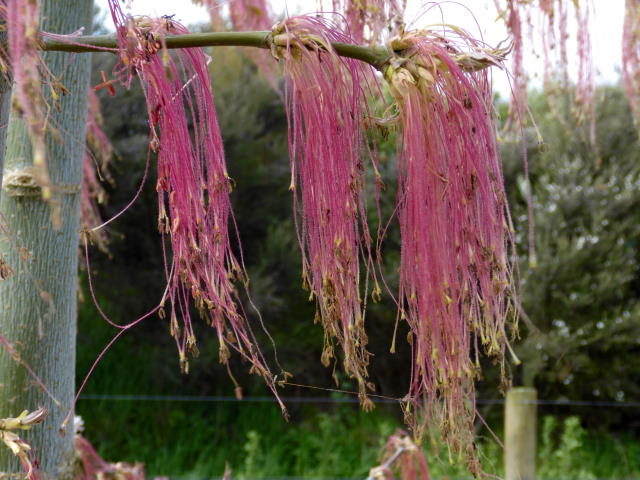
Over the five years 2015 - 2020, Cambridge Tree Trust has been planting a maple arboretum, which now has approximately 35 different species of maple from North America, Europe, and Asia. The area is accessed from Thornton Road and there is a gravelled walking path. Take a stroll in spring as the lovely new leaves unfold, or in late autumn to admire the gorgeous leaf colours.
From North America we have big, handsome trees, often displaying brilliant autumn colour. These include, from the Eastern states, the sugar maple (Acer Saccharum) which of course gives us maple syrup, the red maple (A. rubrum), and the silver maple (A. saccharinum) so-called because of the soft lustre on the back of its leaves. There is also the lovely snake-bark maple (A. pensylvanicum) known as moosewood, a smaller tree and therefore at the mercy of browsing moose. From the Midwest we have the Manitoba maple (A. negundo violaceum), remarkable for its delicate pink flowers in spring (shown). Finally from the Northwestern states we have recently planted the big-leafed Oregon maple (A. macrophyllum).
Europe has fewer species of maple, but they tend to be very hardy types. In the arboretum we have the tall Norway maple (A. platanoides), and the more moderate-sized Caucasian maple (A. cappadocicum), both suitable for street planting, and also the humble field maple (A. campestre) which is used in Europe to form hedges.
Finally we have a large number of elegant Asian species, which tend to be smaller, and in Japan are a cornerstone of garden design. But these will be discussed in next month’s article.
Maples from Around the World 2
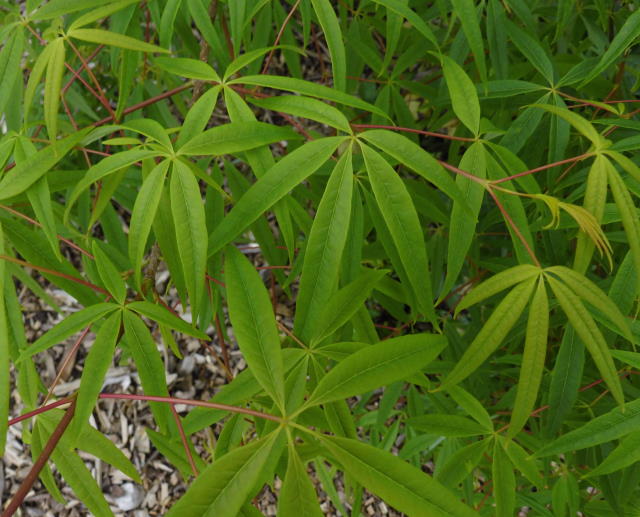
Last month I discussed some of the North American and European maples that can be found in Cambridge’s Maple Arboretum, some growing up to 30 metres in height. This month we will look at some of the elegant, smaller maples from Japan, China and Taiwan and Korea, most of which reach only from 4 to 20 metres high. Along with flowering cherries and pine these form the cornerstone of Japanese gardening.
Asian maples are distinguished by the rich range of variations of their delicate leaf forms, and intriguing bark. The arboretum includes several varieties of the popular Japanese garden maple, Acer palmatum: ‘Senkaki’ is notable for its spectacular bright coral stems, ‘Osakazuki’ for its blaze of red leaves in autumn, while the dark red leaves of ‘Atropurpeum’ in summer are outdone only by the deep purple of ‘Trompenburg’. The ‘snake-barked’ maples sport vertical, white, snake-like stripes on their grey-green trunks: they include A. capillipes from Japan, whose leaves are carried on red stems, and A. davidii from Yunnan, China, exquisite in form, with shiny, heart-shaped leaves turning yellow in autumn. The corky bark maple, A. miyabei hails from Hokkaido, Japan, and one of the rarest and most beautiful is the very slow-growing Chinese paper-bark maple, A. griseum, whose rich, red-brown bark catches the light as it peels. A really unusual one is the evergreen maple, A. fabri, from Vietnam and southern China. But my very favourite is A. pentaphyllum (shown): I adore its exquisitely delicate five-fingered leaf-form.
The arboretum is accessed from Thornton Road. It contains more than 35 kinds of maple, some of which are really rare in New Zealand. Do go and enjoy it.
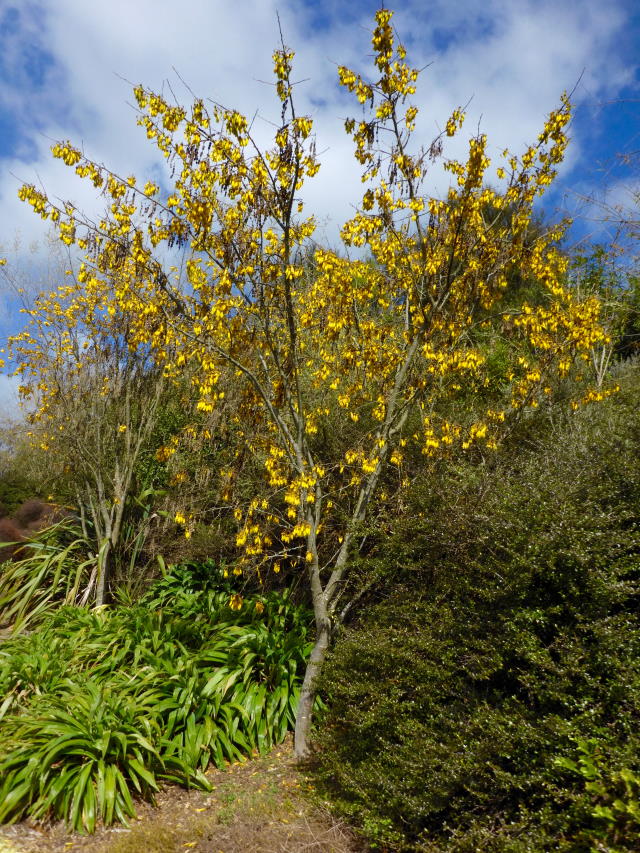
North Island large-leafed kōwhai is the tallest of eight species of sophora endemic to New Zealand, although the genus is found throughout Asia, America, Europe and the Pacific. It belongs to the pea family, which includes gorse, broom and the native kākābeak. Growing to 12 metres, Sophora tetraptera is suitable for a street or garden tree if carefully staked when young, and is great for attracting tui, bellbirds and kākā. Two features make the kōwhai unusual among our native plants: first it is semi-deciduous, and secondly, unlike most New Zealand plants whose blooms are white and inconspicuous, its flowers are a striking sunny yellow. (In te reo Māori the word for yellow is kōwhai) The springtime blooms on the barren branches of the kōwhai are a sign for Māori to plant kūmara and gather kina.
The tree was also used for medicinal purposes: bark collected from the sunny side of the trunk was steeped in water to make wai kōwhai, which was used to treat pain, wounds, skin diseases, and constipation. It is said that in 1925 when the ‘Invincibles’ All Black, George Nepia sustained a severe leg injury and was threatened with surgery to avoid blood-poisoning, he instead chose the kōwhai cure. Two weeks after bathing in wai kōwhai he captained Hawkes Bay to victory over Taranaki. All parts of the tree contain a toxic alkaloid called cytisine, or sophorine, which seems to help people stop smoking, but is also a powerful purgative. After a group of whalers stole the grog of an old Bluff brewer he got revenge next time they were in port by putting boiled kōwhai leaves in his brew. "For 12 hours straight they were erupting at both ends." (Vennell, The Meaning of Trees)
This particular tree is on the Meadow Walk.
Michelia doltsopa
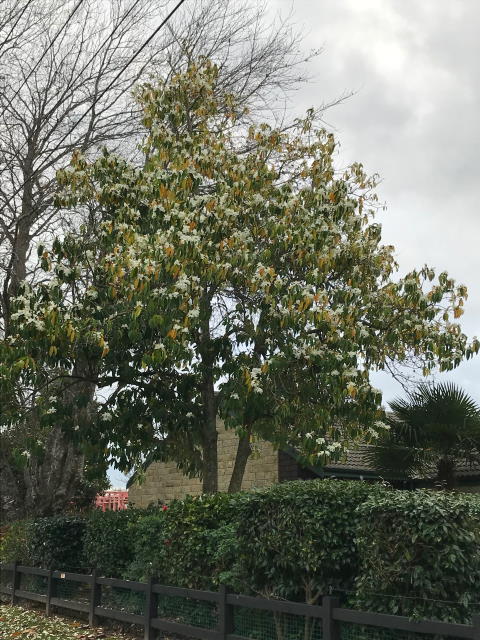
In the depths of winter the velvety brown buds of the Michelia open to reveal an amazing display of large, heavily-scented, creamy-white blooms. To some the fragrance is exquisite, to others it is almost overpoweringly sickly. An evergreen tree, the Michelia can grow to 20 or 30 metres in height, although garden centres have smaller varieties such as ‘Silver Cloud’, which reach to only half this height. It is very popular as an ornamental feature in parks and gardens, is sometimes used as a street tree, and can even be pruned as a hedge.
Michelia doltsopa is a native of the Eastern Himalayan region and of the Meghalayan subtropical forests of North Eastern India. It is a member of the magnolia genus, and as such is also related to the liriodendron (tulip tree) of the Eastern USA, which is the giant of the genus, growing to 60 metres or more. The wood of the Michelia is a rich brown colour, and like the flowers is very fragrant. In Nepal and Bhutan it is used in house-building, where in recent decades it has sometimes suffered from over-harvesting
This tree is is Cambridge Road.
Japanese Persimmon (Diospyros kaki)

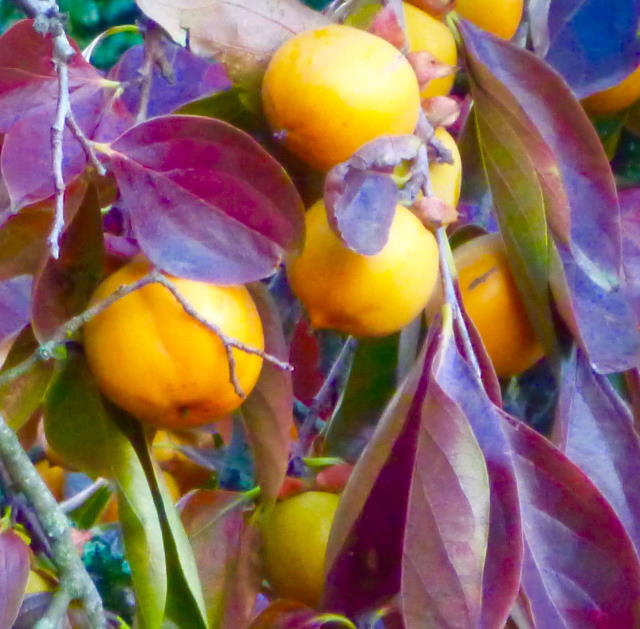
An excellent medium-sized specimen tree for a small, sheltered garden, the persimmon has glossy tropical-looking leaves which turn orange to burgundy in autumn, and delicious orange fruit which holds into winter, providing food for birds (waxeyes) and humans. Try them baked with honey and star anise, as a sorbet, or eat them fresh: the non-astringent varieties can be eaten when crisp like apples or used in salads, but the astringent ones which are high in tannins must be left to ripen to a jelly-like consistency and spooned out. In Asia the persimmon leaf is often dried to make tea, Kaki-No-Ha-Cha. In Japan the fruit is dried to make Hoshigaki, a ‘fudgy, fragrant’ sweetmeat like a ‘date crossed with an apricot’, while in Korea dried persimmon is used to make a spicy punch, or the fruit fermented to make a vinegar. Usefully, dried persimmon is also said to scare away tigers.
The Japanese persimmon was introduced to California and southern Europe in the 1800s and to Brazil in the 1890s. Its Latin name Diospyros is popularly thought to mean ‘pear of the gods’. There is also a North American form of the tree: indeed the word ‘persimmon’ comes from the Powhatan language of the Eastern USA, and means ‘dry fruit’, referencing its astringent nature.
The persimmon belongs to the same genus as ebony but its wood, although hard, cracks easily. In Asia it is used for furniture panelling whereas whereas the American form is used for making billiard cues, weaving shuttles, drum sticks and high quality heads for golf clubs.
The Cambridge Tree Trust was registered with the Charities Commission as a Charitable Entity under the Charities Act 2005 on 16 August 2007. Registration No: CC10859

